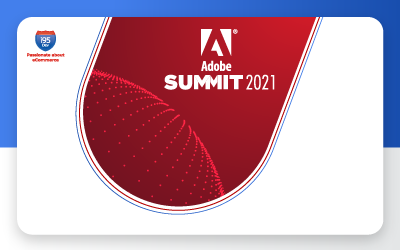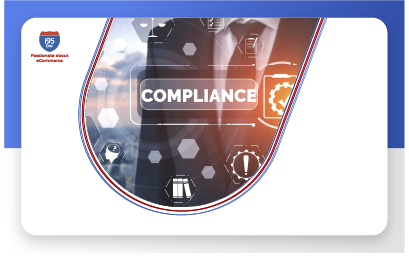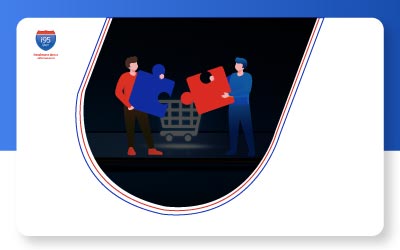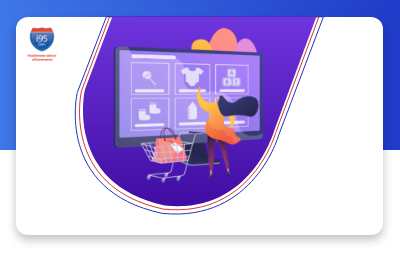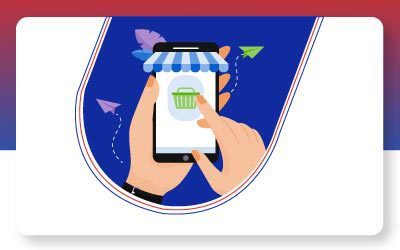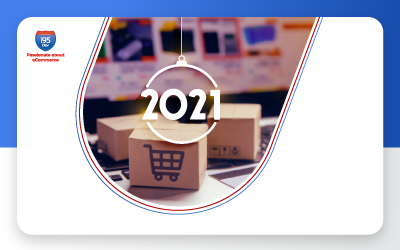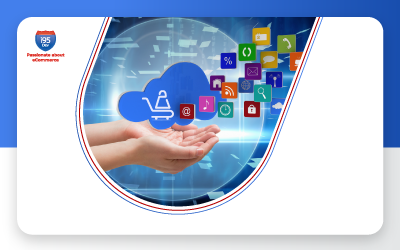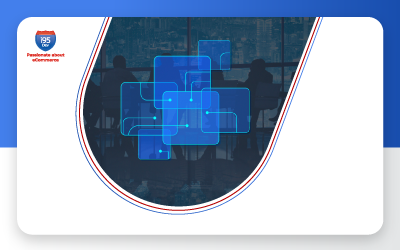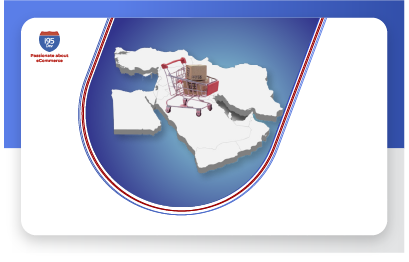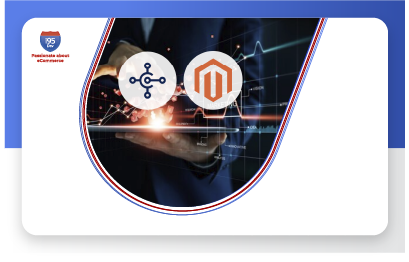Are you Prepared for
Targets’ E-commerce War?
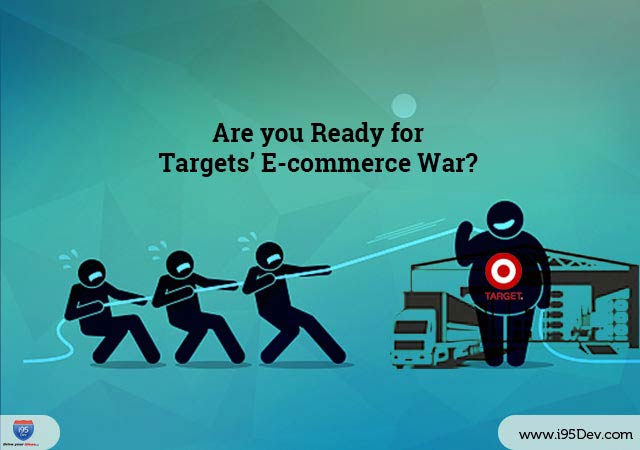
Online retailers, you thought you only had to worry about Amazon. It is time to add Target and Walmart to the list.
Did you know Target spent close to $1.9 billion in 2016 to revamp its digital technology and supply chain initiatives? If that was not enough, Target was investing heavily in two secret innovation projects “Store of the Future” and “Goldfish” (both the projects were scrapped for unknown reasons). The sole purpose of both the projects was to help Target achieve complete retail supremacy by combining their existing strengths with digital innovation and technology.
But why should you be worried? Because they are your competition with big budgets. And because Target’s bet on digital for future growth has worked very well for them. As of Q2 2016, where Target’s overall sales showed a decreasing trend (7% YoY decline), its e-commerce sales was doing quite well (reached $533 million with a 16% YoY growth). Q2 2016 online sales accounted for 3.3% of Target’s total sales, up from 2.7% last year. In addition, they have the following factors working in their favor.
- Brand Name – Target is one of the oldest and most trusted brands in the United States of America, and the second largest discount store retailer. With a large store footprint and exclusive portfolio of owned and exclusive brands as its key strength, Target can very easily make a dent in the world of e-commerce.
- Store Presence – Target has nearly 38 distribution centers and 1,802 stores across the United States. This presence, spanning the length and breadth of the country gives Target a serious competitive edge over traditional retailers. They can leverage their presence not only to better engage customers but also to quickly service them.
- Omni-channel Mindset – Target picked up the trend early and has invested in a responsive e-commerce store. Almost three-fourths of Target’s customers shop from their smartphones and tablets. To add to that, Target’s mobile Cartwheel app lends a strong omni-channel presence to Target’s business as it blends at-home behaviors with the in-store purchase journey.
- Centralized Customer and Inventory Data – The large amount customer and inventory data in Target’s ERP and CRM system presents a huge threat to smaller retailers. Target can leverage this data to drive data-backed decisions and run personalized marketing and sales campaigns.
- Existing Customer Loyalty Programs – Target is the second-biggest discount retailer in the US for a reason. Its customer loyalty program, REDcard, is a real match winner that gives customers an option to avail a 5% discount and an additional 30 days return on the regular return window. Then there is a new loyalty program called REDperk, primarily aimed at attracting new customer not interested in applying for a credit or debit card.
And this is just the tip of the iceberg. Target has hired the best in the industry and here is what their CEO Brian Cornell had to say,
“We’re investing in our business with a long-term view of years and decades, not months and quarters. We’re putting digital first and evolving our stores, digital channels and supply chain to work together as a smart network that delivers on everything guests love about Target, including more than a dozen new brands we’ll introduce over the next two years. We’re confident our strategy meets the challenges of today and will lead us well into the future.”
How do YOU then Survive Target’s Onslaught
Do not worry. You can still give Target a run for its money.
How?
By providing your customers the ultimate customer experience. And you can achieve this, with only a fraction of Target’s budget and the right partner. Here is how.
- Achieve Automated Order Fulfillment
To compete with Target’s store and distribution center presence for timely fulfillment of orders, retailers will have to go one step further. They cannot afford manual data sync techniques to sync orders from their e-commerce store to their ERP system. Manual data sync techniques are prone to errors and can be time-consuming, both of which can negatively impact your customer experience.
The Fix: Integrate your e-commerce and ERP systems to streamline and automate order sync between the two systems. This will ensure your fulfillment team has access to all needed information as soon as an order is placed. In addition, when the order status (including shipping tracking information) is updated in ERP, integration ensures that your customers are automatically kept informed.
- Improve Customer Relationship
With rising competition, increased commoditization of product, and decreased customer loyalty, great customer relationship can be the key to success. However, building a great relationship with customers across multiple channels can be a big challenge – because of lack of centralized data. Customer interaction across various touch points results in information getting accumulated in silos.
The Fix: Retailers can address this by integrating their sales channels with their CRM system. The integration ensures that all customer information is centralized in one single system, CRM. They can then leverage tools to make informed sales decisions and drive personalize the customer experience. Moreover, the customer service representatives can also now better service customers. All leading to an improved shopping experience and increased customer loyalty.
- Drive Cross-Channel Sales with Click and Pick
Physical stores offer you an excellent opportunity to connect with your customers ( the reason why the e-commerce giant Amazon is opening physical stores), but consumers love the convenience of e-commerce. How do you find the right balance between the two? How do you ensure you get the best of both the worlds?
The Fix: Buy online pick up in store (BOPS) is the trend raging across the e-commerce world. Adopting this trend can work wonders for any business with a physical store and an online presence. However, offering BOPS has its challenges like managing communication between the two sales channels, managing inventory and customer experience, returns, and more. These challenges can be easily addressed by integrating your e-commerce store with your store POS system. The integration helps you extract the most of both the channels.
- Be Omnipresent
The customers today are part of a restless and vibrant community. They like to options to shop anytime and anywhere when the mood strikes. Failing to give them that flexibility can be disastrous for your business.
The Fix: Having a presence on online marketplaces like eBay and Amazon can be huge for your business. These platforms give you unparalleled visibility that can take your business to the next level. However, selling on these platforms has its own challenges. You can very easily address these challenges by integrating your e-commerce store with the online marketplace. This, along with e-commerce and ERP integration, makes it easy for you manage sales across multiple channels with little incremental effort, while positively impacting the customer shopping experience.
Conclusion
Not only Target, other retail players like Walmart and online players like Amazon are making investments to up their e-commerce game. And to avoid losing in this Clash of the Titans, you must up your game as well.
On the bright side, you do not need to pump in billions of dollars to stay ahead of them. All you have do is adopt a scalable e-commerce platform, like Magento, and integrate all your critical sales channels (like e-commerce, POS, and online marketplaces) and back-office systems (like ERP and CRM). This and one more thing – partner with the right player (like i95Dev) to support you with your digital initiatives.





